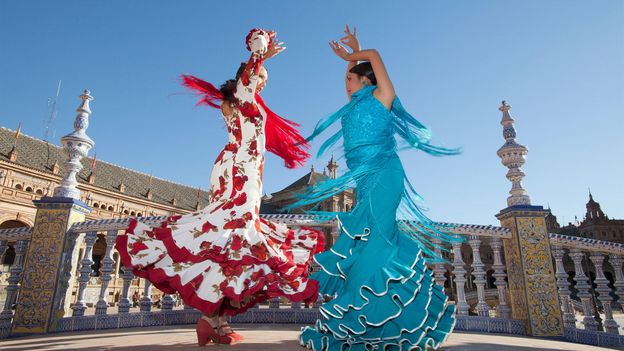
Flamenco music has its roots in the Andalusian region of southern Spain and is believed to have originated from the fusion of various cultures, including Spanish, Roma (Gypsy), and Moorish (Islamic) traditions.
The Roma people, who arrived in Spain in the 15th century, played a significant role in the development of flamenco, bringing with them their own musical traditions and influences from their travels throughout Europe and Asia. They integrated their music with the music of the Andalusian peasants and the Moors, creating a unique and expressive form of music and dance.
Over time, flamenco evolved into a highly refined art form, with distinct regional styles and variations. Today, flamenco is considered an essential part of Spanish culture and is recognized as a UNESCO Intangible Cultural Heritage of Humanity.
Flamenco has a long and rich history in Spain, and it has become an important part of the country's cultural identity. While it has gained popularity in other parts of the world, such as Japan and the United States, it remains most closely associated with Spain.
There are a few reasons why flamenco has remained primarily a Spanish art form. For one, it is deeply rooted in the country's cultural heritage and history, and its distinctive rhythms, melodies, and dance moves are intimately connected to the landscape and traditions of Andalusia.
Additionally, the flamenco community in Spain is incredibly tight-knit and protective of its art form. Flamenco artists often train and perform together from a young age, and there is a deep sense of pride and ownership over the tradition. This has made it difficult for flamenco to be fully embraced or replicated outside of Spain.
Finally, it's worth noting that while flamenco is primarily associated with Spain, it has actually been influenced by a variety of cultures and traditions from around the world. Over the centuries, Andalusia has been a melting pot of different ethnic and religious groups, and flamenco is a reflection of this diversity. So in some ways, flamenco is a truly global art form, even if its heart remains firmly in Spain.